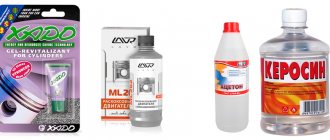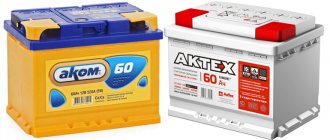Diesel fuel is the most popular petroleum product, which is used as fuel for diesel engines. It is obtained during the distillation of crude oil. The quality composition of diesel fuel is strictly controlled and must meet strict standards.
The density of diesel fuel is the main characteristic that determines the quality of diesel fuel. Fuel density parameters show the ability of the fuel to support the operation of mechanisms under any fluctuations in ambient temperature. The density of diesel fuel (specific gravity) is the amount of its mass in kilograms that fits in one cubic meter. That is, the ratio of the weight of the fuel to its volume. The unit of measurement is kg/m3 or g/cm3. The density of diesel fuel is also affected by the presence of various additives and foreign heavy fractions in it. The presence of the latter negatively affects the quality of the fuel.
The density indicator is not a constant value, since it directly depends on temperature indicators. The higher the temperature, the lower the density of diesel fuel. This indicator is constantly monitored using an aerometer. The optimal temperature for diesel fuel is 18-20°C. When calculating density, a correction factor is used, which is 0.0007 g/cm3 per 1°C
Relationship between fuel density and diesel efficiency
The fuel density and efficiency of a diesel engine directly depend on the air temperature.
Since the combustion process of diesel fuel, which has a high specific gravity, releases a huge amount of energy, significantly exceeding the amount of energy obtained from the combustion of less dense fuel, the use of summer diesel fuel is more economical.
Using this type of fuel in winter will not increase its profitability. This is due to the fact that summer fuel, in addition to kerosene-gas oil hydrocarbons, in which the entire fuel energy reserve is concentrated, contains dissolved paraffin elements. These components have the ability to harden even with a slight decrease in the temperature of diesel fuel. At the same time, diesel fuel becomes viscous, and the throughput of the filters decreases.
To increase the efficiency of internal combustion engines, various additives are added to diesel fuel used in the cold season, which inhibit the hardening of paraffins and increase the density of the fuel. Although such additives lower the thickening temperature of diesel fuel, they affect its density to a small extent. It would seem that if an appropriate additive is added to summer fuel, it can be used as winter fuel, but this is not true. Since the component introduced into the diesel engine only lowers the thickening temperature of the paraffin components of the fuel.
At the same time, the fuel itself will not lose its density, and with a decrease in temperature it will continue to thicken, which will lead to disruptions in engine operation. Another misconception is that when adding an additive to frozen diesel fuel, it is possible to reduce its density. Accordingly, fuel density is an important indicator in the cold season. In hot weather, such characteristics as the percentage of sulfur and cetane number are more relevant.
Naturally, due to changes in the density of diesel fuel, the economic efficiency of fuel in winter is significantly reduced. This is also facilitated by factors such as ice and snow congestion on the roads, which complicate the driving process and increase fuel consumption.
Physical characteristics of diesel
Diesel fuel refers to products obtained after distillation of oil at special enterprises (refineries). The quality and composition of the finished liquid must meet strict standards. The density value is a parameter that is involved in determining the productive performance of the fuel under various conditions.
It is important to know that density demonstrates the number of kilograms of liquid in one cubic meter.
Experts know that this parameter is not constant and depends on external factors, the main one of which is the ambient temperature. A rise in the thermometer stimulates a decrease in density, and the reverse process increases the specific gravity of diesel fuel.
To obtain a specific value, a measuring device is used - a hydrometer. During the measurement process, the unit must be lowered into a container with diesel fuel. To carry out measurements in different liquids, different types of hydrometers are used. Measurements in petroleum products are carried out using models AN, ANT-1 or ANT-2 .
The hydrometer is made in the form of a glass tube, inside of which there is a graduated vertical scale. A greater degree of immersion demonstrates a lower density and vice versa.
We recommend: How to properly fasten a child seat in a car: concern for safety
The increased specific gravity of the liquid is a consequence of the fact that it contains heavy hydrocarbon fractions. Because of this, the high-quality operation of the internal combustion engine may decrease, because the evaporation of the liquid deteriorates and its good atomization by the nozzles is not ensured. An additional negative from the presence of a large number of heavy particles is that soot and various deposits form on the working surfaces.
Formulas for calculating the density, weight and volume of diesel fuel
The density of diesel fuel, its weight and volume is calculated using certain formulas in accordance with GOSTs.
Based on the fact that the density indicator directly depends on temperature, for the accuracy of calculations it is worth taking into account the correction factor and the ambient temperature indicator.
According to the formula, the density of diesel fuel is calculated as the ratio of the mass of the fuel to its volume.
- V = m/p, where
- V—volume;
- m—mass;
- p – density
when calculating the density of diesel fuel is taken:
- for summer fuel 860kg/m3;
- for winter fuel 840 kg/m3.
Accordingly, 1 kg of summer fuel is 1.19 liters, and 1 kg of winter fuel is 1.16 liters.
1 liter contains 0.860 and 0.840 kg of diesel fuel
The density of the petroleum product must strictly comply with regulations. The density recorded at 20°C is taken as a standard. To simplify calculations, special tables have been compiled in which, knowing the weight and volume of the product, as well as the temperature, you can easily find the required indicator.
The weight of diesel fuel is calculated by simply multiplying the density of the petroleum product by its volume. To calculate the mass of diesel fuel in tons, use the formula:
M(mass)=V (volume in liters)*p(density kg/m3)
To calculate the mass of summer fuel having a density of 0.860 kg/m3 with a volume of 1000 liters, we have the following value:
M=1000*0.860
This formula also applies to other types of fuel with different density parameters. Quantitative indicators so far are easily converted from tons to kilograms and vice versa. The calculation of volume, accordingly, is carried out using the inverse formula - the mass of the product is divided by its density. This calculation is very important when drawing up accounting documents for fuel, in which it becomes necessary to convert the weight of fuel into volume for the correct selection of containers.
Calculation of diesel fuel from tons to liters can be done using the formula:
V = (M / 0.850) x 1000, l.
where M is fuel in tons
The average value of 850 kg/m3 is most often used as an indicator of the density of diesel fuel.
Table values
Basic measurements for diesel fuel are carried out at an ambient temperature of +20C. This is due to GOST. You should also take into account the brands of fuel, because they have their own physical characteristics. If you need a value regardless of temperature, you can find it out from the following table.
| Brand name | Density, kg/m3 | Measurement temperature, C |
| Summer d/t | 860 | +20 |
| Winter d/t | 840 | +20 |
| Arctic d/t | 830 | +20 |
Based on the values, it is obvious that the density of winter diesel fuel is clearly less than the parameter for the summer grade of fuel. This ensures better fluidity of the liquid and reduces its pour point.
According to established standards, a summer grade should, under normal conditions, have a specific gravity of 8440 N/m3. A similar indicator for winter d/t is determined as 8240 N/m3.
You can independently weigh a clearly measured liter of fuel. It should reach the scale mark of 830-860 g, depending on the type.
It is worth knowing that summer diesel fuel in our country is marked with the letter “L”.
In the Middle Zone, this type is offered at gas stations from April to early to mid-autumn. It is important that the ambient temperature is not recorded below -5C (at -6C cloudiness occurs). When the value drops below -7-8C, the risk of liquid freezing increases significantly. As a result, blockages occur in the pipelines.
We recommend: Contract engine versus overhaul
The density of diesel fuel varies slightly depending on temperature (the table of brands is indicated above). One degree leads to a change in density by 0.75 kg/m3. A more detailed plate can be downloaded from the link.
How to check the density yourself
To ensure that the quality of the purchased fuel is not in doubt, vehicle owners should purchase it only from trusted suppliers. If you have doubts about the quality of the product, you can check the fuel density yourself.
The need for such a check arises only in the winter season. It should be carried out at a temperature of -8 – 10°C, and if the fuel is positioned as arctic, then lower.
To carry out the test, place a small amount of diesel fuel on a metal surface, and then monitor the cloudiness and spread of the product. If the fluidity of the fuel is normal, we can talk about its quality; if the liquid becomes cloudy and begins to solidify, then it is better to refuse to use it. Diesel fuel for use in the cold season should not freeze to -45°C.
Another way to check is to place a container with fuel where the air temperature is 20 degrees. When the ambient and diesel temperatures are equal, the density is measured with an aerometer and its readings are compared with GOST data.
The fastest inspection option is to visually evaluate the refueling nozzle. If the fuel at its end remains liquid, then this indicates its quality.
You can more accurately check the density of diesel fuel as follows. Diesel fuel is poured into a small container and then placed in conditions where the air temperature is around + 17 to +20 degrees for such a time that the fuel warms up to a similar temperature. Next, the density of the diesel is measured using a hydrometer. The obtained data must be compared with the standards that, according to GOST, purchased diesel fuel must meet.
Reading the Arctic fuel passport, what to pay attention to
The main document characterizing diesel fuel is its quality certificate. A quality passport is issued for a batch of petroleum products and handed over along with the goods. The most important characteristics are located at the bottom of this document. The lowest column indicates the cloud point of the fuel for DT-A-K5 (Arctic fuel), it is - 50 C. Above the PTF column, it = - 53 C. Next come the remaining indicators of DT -A-K5: Fractional composition at different temperatures, Kinematic viscosity, Lubricating ability, Oxidative stability, Corrosion of a copper plate, General contamination, mass fraction of water, ash content, coking, flash point in a closed crucible, mass fraction of sulfur, mass fraction of aromatic hydrocarbons, Density at +15 C, cetane index and cetane number.
Fractional composition of diesel fuel
Diesel fuel consists of fractions that are lighter and heavier. Their severity is determined by the distillation temperature (boiling point). The more light fractions in diesel fuel, the better the diesel fuel evaporates, therefore, diesel fuel with a boiling point of 200 to 360 C is recommended for automobile engines. The smaller the temperature range, the better the fuel burns in the engine. DF where there are many fractions with a low boiling point does not ignite well. Diesel fuel with fractions with a high boiling point, on the contrary, will lead to better flammability and, as a consequence, to increased wear of the rubbing pairs of the fuel system mechanisms. (Increasing engine wear). Therefore, for diesel fuel used in automobile engines, an optimal balance of light and heavy fractions is important.
For diesel fuel DT-A-K5 (Arctic), the following composition is optimal:
9% of the total volume is distilled to 180 C
97% of the total volume will be distilled to 340 C
At 327 C, 95% of the total volume is distilled.
Kinematic viscosity
Kinematic viscosity is the rate of flow of Diesel fuel through a certain cross section. Determined at a temperature of 20 C. Fuel viscosity is a characteristic of its fluidity. If the viscosity is higher than normal, this will negatively affect the operation of the pump and may lead to a cutoff in fuel supply to the engine. Viscosity also affects the formation of a combustible mixture. The lower the viscosity, the better the mixture burns in the engine. The normal operation of the engine and its wear and service life depend on the viscosity.
Lubricity
Indicator of wear of rubbing parts in the engine. It is determined in a laboratory in ball friction machines as the diameter of wear spots in microns. The normal value is less than 460 microns.
The smaller the better the lubricity. Lubricity affects the operation of the fuel injection pump, the formation of carbon deposits, the exhaust, and also the life of the engine.
Oxidative stability
Oxidative stability is the ability of diesel fuel to resist oxidation and deposition of resinous substances. Determined in the laboratory using certain devices.
Copper strip corrosion
This characteristic is very important for storing and transporting Arctic Diesel fuel in metal containers susceptible to corrosion. If the Diesel fuel does not pass the test on the copper plate and spots or deposits form on it, then the Diesel fuel contains sulfur compounds. Such diesel fuel cannot be stored or used.
General pollution and mass fraction of water
General contamination is the presence of dust, dirt, and water particles in diesel fuel. This indicator affects the service life of the diesel fuel filter, the stable operation of the fuel injection pump, and the operation of the engine as a whole.
Ash content
The operation of a diesel engine is a process of burning fuel, which inevitably results in the formation of ash. Ash gets between the rubbing parts of a diesel engine and causes its destruction. The lower the Ash content, the better for engine life.
Coking ability
Coking is an indicator of the formation of solids in diesel fuel during its combustion. Negatively affects engine performance. Coke appears on the engine walls in the form of carbon deposits. The lower the coking rate, the longer the engine service life.
Flash point in closed cup
Flash point (TV) is the lowest temperature at which diesel fuel vapor ignites when ignited. Characterizes the flammability of diesel. It is believed that the higher the TV, the better the fuel. Safer. According to GOST, TV must be more than 30 C. According to the passport for Arctic diesel fuel, TV is 58 C. Therefore, Arctic fuels are classified as flammable liquids (flammable liquids).
Mass fraction of sulfur
The mass fraction of sulfur is the most important parameter that affects both the price of diesel fuel and its class. Sulfur significantly affects the wear of cylinders, pistons and other engine components. Sulfur combustion products SO2 and SO3 negatively affect the environment by polluting the air. The amount of sulfur content is determined in different quantities. In mg/kg: mg/kg, in ppm, in %. In different passports you can find different systems of measures. Therefore, in order not to get confused, let’s correlate these measures by class.
Class: “Euro 2” is 2000 mg/kg or 2000 ppm or 0.2%
Class: “Euro 3” This is 350 mg/kg or 350 ppm or 0.035%
Class: “Euro 4” This is 50 mg/kg or 50 ppm or 0.005%
Class: “Euro 5” is 10 mg/kg or 10 ppm or 0.001%
Now let's turn to our passport. The sulfur content of Arctic diesel fuel is less than 3 mg/kg. Therefore, this fuel can be classified as Euro 5.
Mass fraction of aromatic hydrocarbons
This characteristic is responsible for emissions into the atmosphere. The lower this indicator, the cleaner the smell and exhaust into the atmosphere. Aromatic carbons also affect the formation of carbon deposits on pistons, injectors and combustion chambers, which affects engine life.
Density at +15 C
An important indicator for determining the price of fuel if the price is announced to you in tons. In general, in the wholesale trade segment it is customary to determine the measure of petroleum products in tons. Since an ordinary person is used to buying diesel fuel at a gas station, it is not entirely familiar and understandable to him to compare the price in tons and the price in liters. How can I convert the price in tons to liters? Very simple. You need a price in tons, for example 46,000 rubles. per ton multiplied by density. Let's look at the quality certificate. The Quality Certificate indicates the density at +15c equal to 801.5 kg/m3. The cost of a liter of diesel fuel will be 46,000 * 801.5/1000000 = 36.87 rubles/liter. You can determine the approximate wholesale price of Arctic diesel fuel on the website of the St. Petersburg Commodity Exchange DTZ. There is no indicator for Arctic fuel on the website, so rely on the DTZ and add 1000-1200 to this.
Cetane index and cetane number
Cetane number is a characteristic of the ignition time of diesel fuel after its injection into the combustion chamber. The higher the cetane number, the smoother the fuel mixture burns and the smoother the diesel engine runs. The cetane number in our passport is 57.5, which is within normal limits. If the cetane number is more than 60, the fuel may not burn completely, which leads to increased smoke and increased fuel consumption. A high cetane value indicates that the fuel is truly “arctic” and the engine will start easily in extreme cold.
What determines the density of diesel fuel?
The density of diesel fuel is not constant. It changes under the influence of temperature parameters. This indicator is based on the ratio of fuel mass to its volume. When making calculations, the brand of diesel fuel and the correction factor are taken into account. There are several main types of diesel fuel - summer and winter types. Winter fuel has a lower density, which avoids thickening at low temperatures.
The correct selection of fuel additives can to some extent affect the density of the liquid.
Density of diesel fuel and temperature are directly related to each other.
To obtain standard indicators, the density of the fuel is produced at a temperature of 20°C and normal atmospheric pressure. And to calculate density at different temperatures, correction factors or special density tables are used.
There is a certain standard according to which the fuel density is:
- in winter – 860 kg/m3;
- in summer - 840 kg/m3;
- in Arctic conditions – 830 kg/m3.
Separation of diesel fuel according to GOST
According to GOST 305-82, diesel fuel is divided depending on the season of use into the following types:
- Summer - remains liquid down to only -5 ◦C. It is recommended to use it at air temperatures above zero Celsius.
- Winter - should not thicken to -35 ◦C. Used in frosts below -20 ◦C.
- Arctic – hardens no higher than -50 ◦C. Recommended for use in frosts below -45 ◦C.
The weight of one cubic meter of summer diesel fuel should be no more than 860 kg. The weight of a cubic meter of winter diesel fuel should be no more than 840 kg. The weight of a cube of Arctic diesel fuel should not exceed 830 kg. GOST prescribes measuring the weight of diesel fuel at 20 degrees Celsius.
Standards for calculating the density of diesel fuel
For the unity of calculating the density of diesel fuel, unified regulatory documentation has been developed, which spells out the main components for correct calculations:
- the reference temperature is 20°C;
- a change in temperature for each degree requires an adjustment of 0.0007 g/cm3;
- when the diesel fuel temperature increases from the reference values, a correction factor should be subtracted by multiplying it by the difference in degrees Celsius;
- when the temperature decreases, a coefficient is added to the reference indicators, which is multiplied by the temperature difference in degrees Celsius.
cetane octane number, viscosity density, flash point Blog CityStroyOil
Experts include the following among the most important qualities of petroleum products that determine their consumer attractiveness:
- octane and cetane number;
- density;
- viscosity;
- flash point.
Technical characteristics of diesel fuel according to GOST: octane and cetane number
The octane number of diesel fuel is the basis for the classification of gasoline brands. The higher this indicator, the better the fuel is resistant to detonation and is ready for strong compression. The indicator is determined by the motor or research method. The second option is indicated in the labeling by the letter “I”. Fuel for cars is marked with the letter “A”, for aviation transport – with the letter “B”. It is possible to use gasoline with an octane number of at least 91, in engines with high compression - from 95.
The cetane number of diesel fuel (CN) determines the ability of the fuel to ignite (the period between its injection into the cylinder and the start of combustion). This feature directly depends on the composition of the petroleum product and is one of the criteria for its environmental friendliness.
The fewer harmful impurities it contains, the higher the cetane number and the weaker the atmospheric pollution. CN indicators recommended by experts: up to 20 for large ships, 40 for trucks and at least 50-55 for cars (according to ASTM D7668, EN 16715 standards). In winter, you should use fuel with a higher cetane number than in summer.
Characteristics of diesel fuel according to GOST: density and viscosity
The density of diesel fuel directly affects the volume of their consumption and engine efficiency. All motorists know that much more fuel is consumed in winter than in summer. And all because in the cold season the engine requires fuel of lower density. You won't be able to use the summer option. It contains paraffins that will begin to crystallize at 0 °C.
The density of petroleum products is measured with a hydrometer. DT is tested in two temperature conditions: +15 °C and +20 °C. Standard indicators: 0.820-0.845 g/cc. cm and 0.860 g/cc. cm respectively. The density of gasoline is determined at +20 °C. Standard indicators for various brands: A80 within the range of 730-750 kg/m3, AI-93 and AI-98 from 748 to 770 kg/m3.
Temperature and density directly affect the viscosity of the oil product - the internal friction of the liquid components. Many qualities of machines depend on this: atomization of fuel injectors, power of transfer pumps, wear rate of parts, and others. Low viscosity of diesel fuel is characteristic of high-quality fuel. To improve this indicator for fuel oil, it is preheated to 40 °C - 110 °C (depending on the brand).
Flash point
The flash point of diesel fuel characterizes the ability of a substance to ignite in a closed crucible. The higher it is, the safer the transportation of the product. The minimum indicator for winter DT is 35 °C, summer - 40 °C, arctic - 30 °C.
Our company's products demonstrate exemplary compliance with quality standards. We offer customers from St. Petersburg and the region the entire range of fuel brands regulated by current GOSTs.
Density of diesel fuel in summer and winter
The fuel used in summer and winter differs in its basic characteristics.
For winter, fuel that has the following indicators is suitable:
- low density;
- low viscosity;
- does not freeze at a temperature of -45O.
Low viscosity density allows the fuel not to turn into a gel and circulate freely inside the internal combustion engine. In cold weather, the use of high-density fuel is strictly prohibited in order to avoid problems with the filter system.
Summer fuel is characterized by:
- high density (not less than 0.86 kg/l);
- difficult to ignite (withstands temperature increases up to +45°C).
When winter fuel is used in the summer, engine power decreases and smoke levels increase.
The best time for summer fuel is April - September, if the temperature does not drop below -4°C. Otherwise, the diesel fuel will become cloudy, and when the temperature drops another few degrees, it can lead to problems with engine operation.
When do they start selling winter diesel fuel?
Climatic zones in Russia vary sharply in their temperatures. Therefore, most gas stations begin selling winter diesel fuel from the end of October - beginning of November, and finish in April. Otherwise, the diesel fuel will increase its viscosity, become cloudy and, ultimately, form a gelatinous gel characterized by a complete lack of fluidity. Starting the engine in such conditions is impossible.
However, there are differences in the timing of the sale. For example, in some regions of the country the temperature does not drop too sharply, and there are a few days that will be cold, with a generally mild winter (for example, the Kaliningrad or Leningrad regions). In such a situation, the so-called “winter mixture” is used, which consists of 20% summer diesel fuel and 80% winter diesel fuel. During an abnormally mild winter, the percentage of winter and summer diesel fuel can even be 50/50.
Examples of diesel fuel density at different temperatures
When calculating fuel density, the following data must be taken into account:
- fuel density indicators at reference values specified in the petroleum product passport;
- actual liquid temperature measured in the transport container;
- apply a correction factor of 0.0007 when calculating the temperature difference;
- make adjustments to the calculation. At elevated temperatures, subtract the resulting value from the density indicated in the passport, and at low temperatures, add it.
Calculation of specific gravity for 20 ◦ C
- Measure the density and average temperature of diesel fuel.
- Calculate the difference between the actual temperature and 20 ◦ C.
- Multiply the temperature difference by the correction factor.
- If the actual temperature is less than 20 ◦ C, then subtract the result of calculating the third point from the density value at a given temperature. If the liquid is warmer than +20 ◦ C, then these values need to be added.
For example, the density of fuel at a temperature of 0 ◦ C is 0.997 g/cm 3 . The difference between the actual temperature and 20 ◦ C is 20. Then 20 × 0.0007 = 0.014 g/cm. Since at 20 ◦ C the density of the fuel will be less than at 0 ◦ C, it is necessary to subtract the correction value from the density at 0 ◦ C - 0.997-0.14 = 0.857 g/cm 3 . To convert the result from grams per cubic centimeter to kilograms per cubic meter, you need to multiply the value expressed in grams per cubic centimeter by 1000. That is, the specific gravity of our diesel fuel at 20 ◦ C will be equal to 857 kg/m 3. This allows us to make the assumption that, judging by the calculation results, it is more likely to be summer than winter. It is impossible to make an exact conclusion about what season the fuel is intended for based on its density.
Diesel fuel density, consumption, operation
The density of diesel fuel is the main characteristic for determining the climatic use of diesel fuel and its impact on the operation of the internal combustion engine. If the fuel is chosen incorrectly or the quality of the liquid is not high, this will significantly reduce the efficiency of the engine, especially at the time of start-up. Which, in turn, will lead to an increase in fuel consumption to increase engine efficiency. Excessive load on the fuel system can cause increased fuel consumption and even cause engine failure.
What types of “winter” fuel are there?
If we order fuel in bulk, in bulk, and then fill up at a gas station, we know that the fuel in winter should be winter grade. Few people know, but winter fuel varies. Winter diesel fuel can be conditionally classified according to its filterability limit temperature and cloud point. What is the limiting temperature of filterability (PTF)? PTF is the temperature at which diesel can flow through a filter in any fuel system. Roughly speaking, this is the maximum temperature limit at which a diesel engine can start and operate. For example, for the brand of diesel fuel DT-Z-K5, the PTF is -30 C. This means that at minus 30 your engine will still work somehow, but at -31 C it will no longer work.
Cloud point is the maximum limiting temperature at which diesel fuel does not turn cloudy (white). Cloudiness occurs due to the appearance (crystallization) of paraffin crystals. The already mentioned brand DT DT-Z-K 5 has a cloud point of – 14 C i.e. 16 C higher than PTF. What does this mean? The fact is that if your fuel is cloudy, you shouldn’t be afraid, the engine will run on it. Of course, the filter may fail earlier, but this should not significantly affect the operation of the engine.
The main popular types of “winter” fuel are:
Grade F (inter-seasonal) diesel fuel. PTF = – 23 C. Turbidity temperature = – 6 C.
Variety DT-Z-K 5 (true winter). PTF = -30 C. Turbidity temperature = -14 C
DT grade –A-K5 (Arctic fuel). PTF = -53 C. Turbidity temperature = -50 C
What does density say about the quality of diesel fuel?
The density of diesel fuel is determined by the ratio of the fractions that make up the fuel. If the composition of the fuel is dominated by heavy hydrocarbons, this will negatively affect the operation of the engine and reduce the injection of liquid by the injectors into the combustion chamber. Heavy fractions have a high boiling point, which reduces the mixing of fuel microparticles with air. In order for diesel fuel vapors to ignite, a higher temperature will be required, and this will cause problems in the operation of the engine and lead to increased fuel consumption.
How to count diesel fuel correctly?
Here is the formula for calculation:
- number of liters of fuel you filled: how far you drove x 100 = fuel consumption in l / 100 km
- 48.7 l: 517 km x 100 = 9.4 l / 100 km
- 28.2 l: 300 km x 100 = 9.4 l / 100 km
- Average fuel consumption x fuel price: 100 = cost per 1 kilometer
- 9.4 l / 100 km x 40 rub. /
Interesting materials:
What to feed your pet parrot? What to feed domestic pigeons in winter? What to feed flamingos? What to feed turkeys for rapid growth? What to feed Big 6 turkeys? What to feed two-week-old turkey poults? What to feed turkey poults after 10 days? What to feed a cow to increase milk? What to feed a grasshopper at home? What to feed the little eagle owl?
Why does diesel fuel consumption increase in winter?
At low temperatures, fuel consumption increases significantly due to the cost of warming up the unit before starting work and increased friction in a cold engine. After the start of movement, diesel fuel consumption does not exceed summer levels, and, possibly, decreases because... torque at low speeds reduces wheel slip on snow surfaces. Thick oil in gearboxes exerts a noticeable load. At low temperatures, the specific gravity of air becomes higher, which contributes to a change in the composition of the working mixture. Cold air also increases the drag coefficient, which increases diesel fuel consumption by several percent every 100 km.
Reasons for increased fuel consumption in winter
Do-it-yourself diesel fuel cleaning
Depending on the density of diesel fuel, not only the possibility of freezing or thickening is determined, but also the possibility of energy release. The increased value makes it possible to obtain more joules from each liter during combustion in the cylinders. This will entail an overall increase in engine efficiency.
As a result, the car will consume significantly less fuel for every 100 km of travel. You can drive further on one filled tank.
Winter and arctic fuel types have fewer kg per cubic meter. This means that after combustion, less energy is released from the engine than in comparison with the summer grade of hydrocarbons used.
However, the use of diesel fuel marked “L” to increase the performance of internal combustion engines in winter is unacceptable or undesirable. The composition of such a liquid contains a large percentage of paraffins in a dissolved state. A decrease in temperature affects fluidity, viscosity and geliness increase. Pipelines become dirty and clogged.
For each season you need to choose an acceptable type of fuel. This will allow you to operate your vehicle optimally and efficiently in any conditions.
Why does diesel fuel freeze?
Some fractions that make up diesel fuel thicken at low temperatures. The viscosity index directly depends on the ambient temperature and is determined by the density of the liquid, which depends on the number of fractions with a high boiling point. If there is water in the diesel fuel, it will sink to the bottom of the tank. There it will freeze at subzero temperatures. Ice will block the entrance to the intake tube and cut off the fuel supply to the engine. To resume operation of the unit, you will need to warm up the fuel tank and fuel supply system.
Additives (additives)
Improving quality by adding additives, which has been a common practice for gasoline for many years, has recently become popular for diesel fuel (Super and Premiom diesel fuels). The main additives used are those that have multiple effects:
- additives to improve ignition increase the cetane number and are responsible, in particular, for a “softer” combustion;
- detergents are used to prevent coking of injectors;
- corrosion inhibitors (retarders) are necessary to prevent corrosion of metal parts (if water gets into the fuel system);
- Antifoaming additives serve to facilitate filling the fuel tank.
The total concentration of additives usually does not exceed 0.1%!, so that the physical characteristics of the fuel such as density, viscosity and boiling curve do not change.
What you need to know when switching to winter diesel fuel
Diesel fuel consists of heavy hydrocarbons of the paraffinic group, which can precipitate and crystallize when the temperature drops. The diesel fuel simply thickens and does not pass through the filters or through the power supply system and pumps. In this case, the fuel becomes cloudy, viscous until completely solidified. In this regard, there are three types of fuel for diesel engines, which must correspond to the ambient temperature:
- summer diesel fuel, which can only be used at temperatures from 0°C;
- winter fuel, the use limit of which ends at -30°C;
- Arctic diesel fuel is used when the temperature is -50°C.
Diesel fuel has remained virtually unchanged over the past hundred years.
Moreover, all types of diesel fuel can turn into plasticine, but at different temperatures. According to GOST 52368-2005, summer fuel becomes cloudy at a temperature of -5°C, at 7 degrees below zero the filterability limit is reached, and at -10°C it is completely waxed. Cloud point, even short-term and at night, is the main signal to start switching to winter fuel. But, unfortunately, gas stations cannot always offer winter fuel on time, and even if they offer it, it is not a fact that it is winter. It is not possible to check the fuel at a gas station, so many people use depressant additives - antigels - during the transition period. In principle, oil refineries in the middle zone use exactly the same method. Winter fuel is prepared from summer fuel by introducing depressant additives into it. But this is not the most important indicator of fuel quality.
Where did diesel fuel come from?
In the photo - diesel fuel, which appeared later than gasoline
So Rudolf Diesel has almost nothing to do with diesel fuel. He owns a patent for an internal combustion engine that runs on kerosene or fuel oil, and the fuel ignites not from a spark, as in expensive gasoline, but under high pressure. The Diesel engine was a three-meter structure that produced 17 horsepower and rotated at a speed of about 170 rpm. The efficiency of the Diesel unit was 26% and this was almost a revolution in 1893, because the steam engine was half as weak. The diesel fuel we are familiar with today appeared at the suggestion of Emmanuel Nobel. He bought a license from Rudolf Diesel and made the kerosene engine run on diesel fuel. And Diesel himself probably knew something extra, because one fine September evening in 1913 he left the house and never returned. This is how the Diesel unit would have worked, like a compressor or current generator, if Robert Bosch had not become interested in its design, he brought the diesel engine to life, equipped it with a high-pressure fuel pump, and was able to fit it under the hood of a Mercedes 5K3 truck. But that’s another story, we’re already distracted from diesel fuel.











